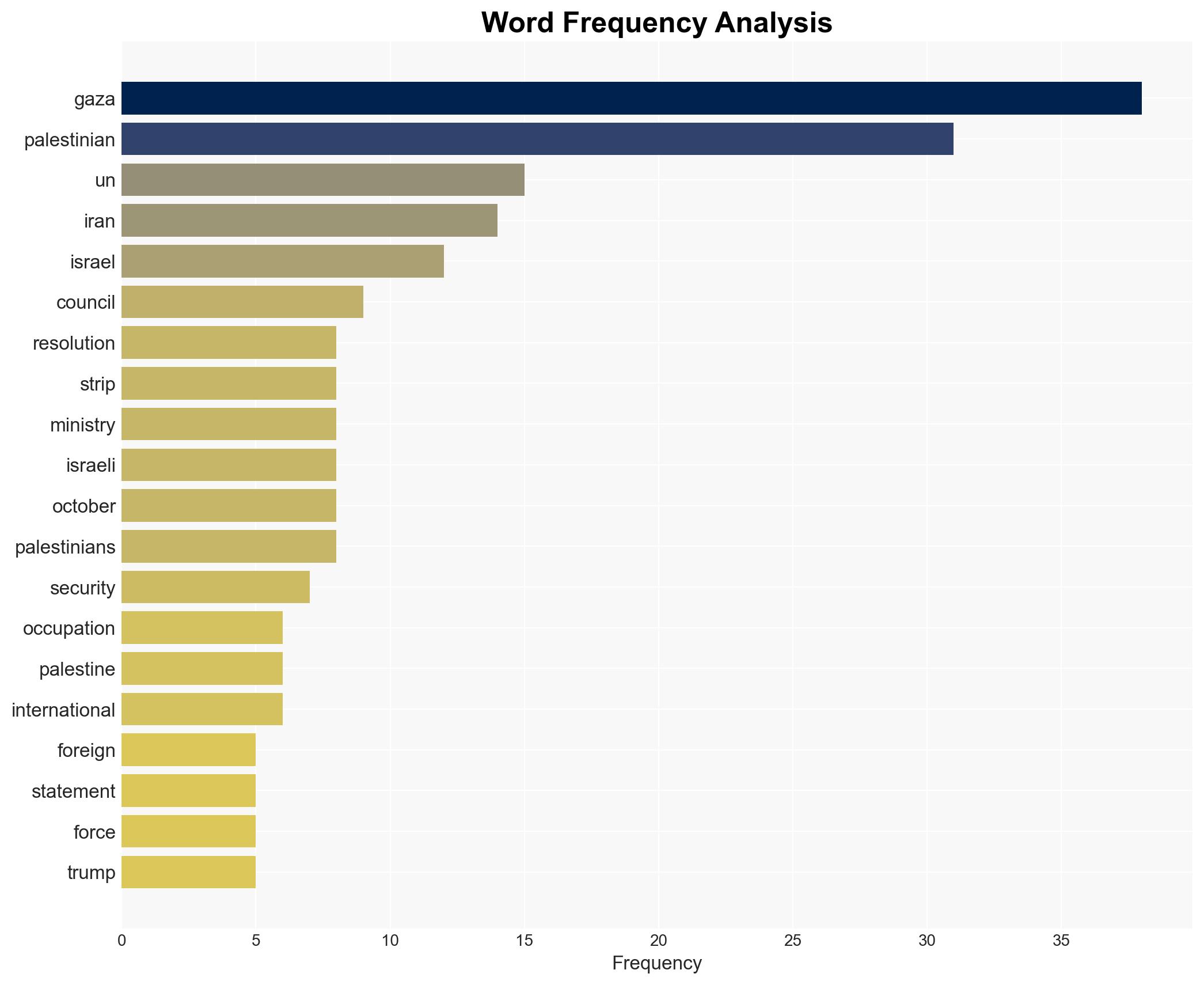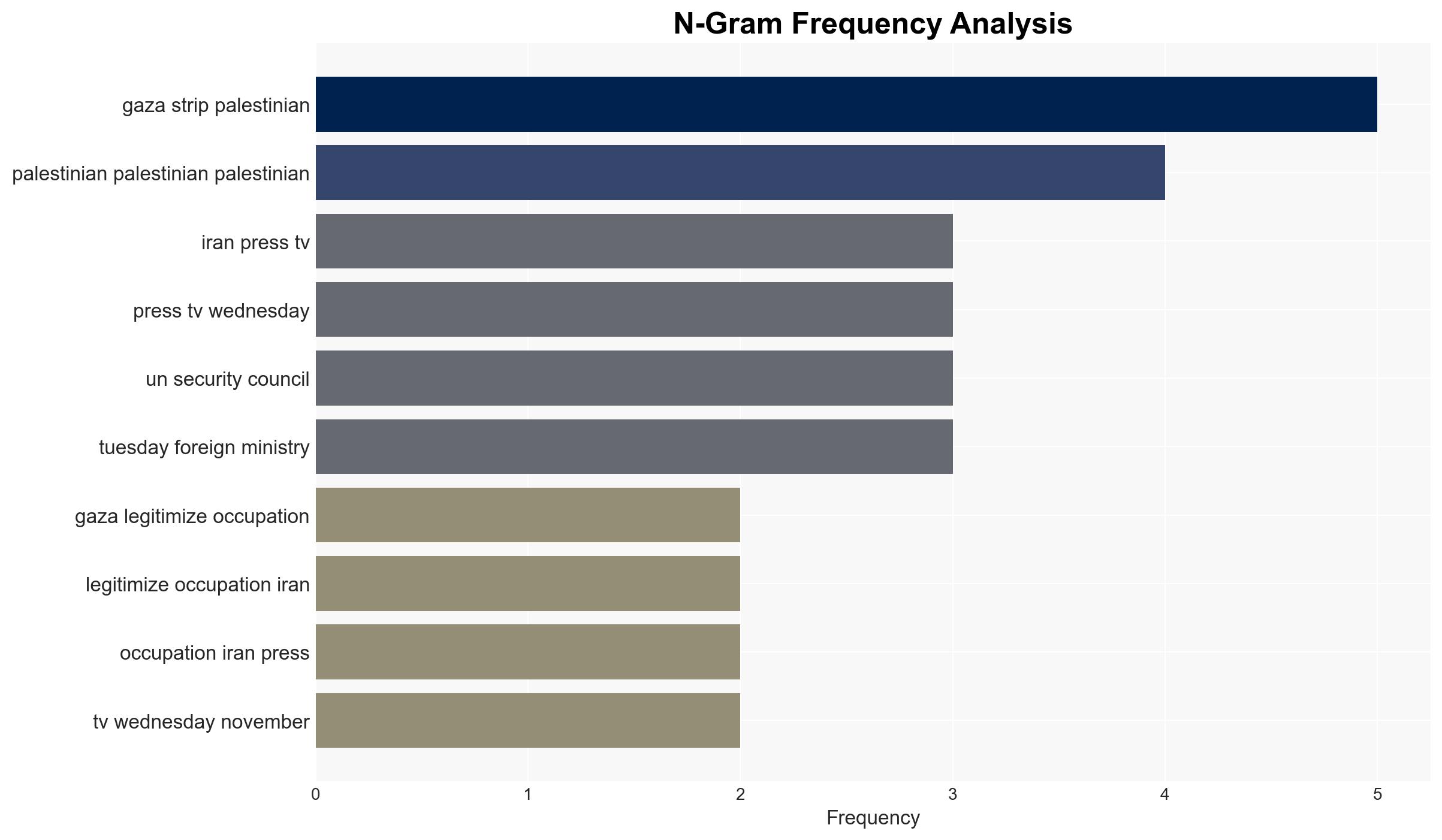Iran warns UN adoption of US resolution on Gaza legitimizes occupation – Globalsecurity.org
Published on: 2025-11-20
AI-powered OSINT brief from verified open sources. Automated NLP signal extraction with human verification. See our Methodology and Why WorldWideWatchers.
Intelligence Report:
1. BLUF (Bottom Line Up Front)
The most supported hypothesis is that Iran’s warning against the UN adoption of the US-drafted resolution on Gaza is primarily aimed at maintaining its regional influence and supporting Palestinian groups aligned with its interests. This stance is likely to exacerbate tensions in the region, potentially leading to increased instability. Confidence Level: Moderate. Recommended action includes diplomatic engagement with regional stakeholders to de-escalate tensions and ensure humanitarian aid delivery.
2. Competing Hypotheses
Hypothesis 1: Iran’s criticism of the UN resolution is a strategic move to bolster its influence in the region by positioning itself as a defender of Palestinian rights and opposing US and Israeli actions.
Hypothesis 2: Iran’s warning is primarily driven by genuine concern for Palestinian self-determination and the potential legitimization of Israeli occupation, without significant ulterior motives.
Hypothesis 1 is more likely given Iran’s historical pattern of using the Palestinian cause to enhance its geopolitical influence and counter US and Israeli presence in the region.
3. Key Assumptions and Red Flags
Assumptions include the belief that Iran’s public statements align with its strategic objectives and that the US-drafted resolution will significantly alter the status quo in Gaza. Red flags include potential bias in Iranian state media reporting and the possibility of Iran using this issue to divert attention from domestic challenges. Deception indicators may involve overstating the resolution’s impact to rally regional support.
4. Implications and Strategic Risks
The adoption of the resolution could lead to increased regional tensions, with Iran potentially escalating its support for proxy groups in Gaza. This could result in political instability and increased violence. Cyber and informational threats may also rise as state and non-state actors exploit the situation to further their agendas.
5. Recommendations and Outlook
- Engage in diplomatic dialogue with Iran and other regional actors to address concerns and reduce tensions.
- Facilitate humanitarian aid to Gaza to mitigate the humanitarian crisis and prevent further escalation.
- Best-case scenario: Successful diplomatic engagement leads to a de-escalation of tensions and improved humanitarian conditions in Gaza.
- Worst-case scenario: Increased Iranian support for proxy groups leads to heightened conflict and regional instability.
- Most-likely scenario: Continued diplomatic stalemate with periodic escalations and humanitarian challenges.
6. Key Individuals and Entities
Donald Trump (former US President), Iranian Foreign Ministry, UN Security Council.
7. Thematic Tags
National Security Threats, Middle East Geopolitics, US-Iran Relations, Israeli-Palestinian Conflict
Structured Analytic Techniques Applied
- Cognitive Bias Stress Test: Expose and correct potential biases in assessments through red-teaming and structured challenge.
- Bayesian Scenario Modeling: Use probabilistic forecasting for conflict trajectories or escalation likelihood.
- Network Influence Mapping: Map relationships between state and non-state actors for impact estimation.
Explore more:
National Security Threats Briefs ·
Daily Summary ·
Support us





